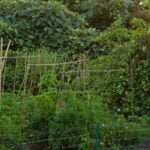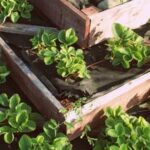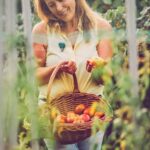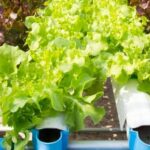Welcome to the ultimate guide for vegetable gardening in the state of Florida. Known for its sunny climate and fertile soil, Florida offers the perfect conditions for growing a wide range of delicious vegetables. In this article, we will explore why Florida is an ideal place for vegetable gardening and how you can make the most of your garden to yield bountiful harvests.
One of the major advantages of gardening in Florida is its unique climate. With its warm temperatures and abundant sunshine, Florida provides a long growing season that allows for multiple plantings and a wide variety of crops. Unlike colder regions, where vegetable gardening may be limited to just a few months, Floridians can enjoy fresh produce year-round.
Another key factor that makes Florida an excellent place for vegetable gardening is its rich soil. With sandy loam and limestone-based soils predominating in many areas, Florida’s soil provides optimal drainage while retaining enough moisture to support healthy plant growth. This combination creates a favorable environment for root development and nutrient uptake, resulting in thriving vegetable crops.
When planning your vegetable garden in Florida, it’s essential to consider site selection and soil preparation. By carefully choosing the right location with ample sunlight and good air circulation, you set your plants up for success. Additionally, preparing your soil by enriching it with organic matter helps improve its fertility and water-holding capacity.
In the next sections of this article, we will delve deeper into various aspects of successful vegetable gardening in Florida. From selecting the best vegetable varieties for the warm climate to mastering transplanting techniques and effectively managing pests and diseases peculiar to this region – we’ll cover it all.
So whether you’re a beginner excited to start your first vegetable garden or an experienced gardener looking to enhance your skills specific to Florida’s conditions, this comprehensive guide will equip you with everything you need to know about cultivating a fruitful vegetable garden in the Sunshine State.
Planning a Florida vegetable garden
When it comes to planning a vegetable garden in Florida, there are several factors to consider in order to ensure successful growth and harvest. Site selection and soil preparation are crucial steps that will lay the foundation for a thriving garden.
Additionally, researching the best vegetable varieties suitable for Florida’s warm climate will help maximize your chances of success. Lastly, mapping out your garden and strategizing on space utilization will allow you to make the most of your growing area.
Site Selection and Soil Preparation
Choosing the right location for your vegetable garden is key. Look for an area that receives at least six hours of direct sunlight per day, as most vegetables thrive in full sun. It’s also essential to select a spot with good drainage to prevent waterlogged soil which can lead to root rot.
Once you have chosen your site, it’s time to prepare the soil. Florida’s sandy soils tend to drain quickly and may lack vital nutrients. To improve soil fertility, incorporate organic matter such as compost or well-rotted manure into the soil before planting. This will add nutrients, improve moisture retention, and encourage beneficial microbial activity.
Researching Best Vegetable Varieties
One advantage of gardening in Florida is that the warm climate allows for an extended growing season. However, not all vegetables perform well in this environment. Researching and selecting heat-tolerant varieties is crucial for a successful harvest.
Some popular vegetables that flourish in Florida include tomatoes, peppers, cucumbers, beans, okra, collard greens, and sweet potatoes. Opt for varieties labeled as “heat-resistant” or “heat-tolerant”. These varieties are bred specifically to withstand hot temperatures without compromising growth or yield.
Tips for Mapping Out Your Garden
Before you start planting your veggies, take some time to map out your garden. Consider the size and spacing requirements of each vegetable variety to avoid overcrowding, which can lead to poor air circulation and an increased risk of disease. Companion planting is another strategy that can maximize space utilization and benefit your plants by creating a balance between pest control and beneficial insect attraction.
Grouping vegetables with similar water and nutrient requirements together can simplify irrigation and fertilization tasks. Additionally, rotating crops from year to year will help prevent soil-borne diseases and maintain soil health.
By carefully planning your Florida vegetable garden, you’ll be setting yourself up for success right from the start. The right site selection, soil preparation, and vegetable varieties tailored to Florida’s climate will ensure a bountiful harvest throughout the growing season.
Essential tools and equipment for Florida vegetable gardening
There are several essential tools and equipment that are necessary for successful vegetable gardening in Florida. Having the right tools on hand will not only make your gardening tasks easier but also ensure optimal growth and productivity of your vegetable crops. Here is a list of must-have tools for your Florida garden:
- Garden Spade or Shovel: A sturdy spade or shovel is essential for tasks like digging planting holes, turning over soil, and removing weeds. Look for a spade or shovel with a comfortable handle and a sharp blade for efficient digging.
- Hand Trowel: A hand trowel is a versatile tool that is perfect for transplanting seedlings, planting small seeds, and removing weeds in tight spaces. Choose a hand trowel with a strong stainless steel blade and a comfortable grip.
- Pruning Shears: Pruning shears are essential for trimming plants, removing dead foliage, and harvesting vegetables. Invest in high-quality pruning shears with sharp blades that can easily cut through stems without causing damage to the plant.
- Garden Gloves: Protect your hands from thorns, prickles, and harmful insects by wearing durable garden gloves. Choose gloves made from breathable materials that offer good dexterity while still providing ample protection.
In addition to these tools, irrigation systems play a crucial role in Florida’s hot climate. The combination of high temperatures and intense sunlight can quickly dry out the soil, making it vital to provide consistent moisture to your vegetable plants. Consider investing in drip irrigation systems or soaker hoses that deliver water directly to the root zone of plants while minimizing evaporation loss.
Furthermore, having some form of sun protection is important when working in the Florida heat. Consider investing in a wide-brimmed hat, sunglasses, and sunscreen to protect yourself from harmful UV rays while you tend to your garden.
By equipping yourself with these essential tools and equipment, you will be well-prepared to tackle the unique challenges of vegetable gardening in Florida, ensuring the success and productivity of your vegetable crops.
Starting your vegetable garden from seeds
When it comes to starting your vegetable garden in Florida, one of the most cost-effective and rewarding methods is starting from seeds. This section will provide a step-by-step guide on how to start seeds indoors or directly sow them in the ground. Additionally, it will highlight the best timing for planting different vegetable seeds in Florida.
Starting seeds indoors allows you to get a head start on the growing season and gives you better control over the conditions for germination and seedling growth. Here are the steps to successfully start seeds indoors:
- Select high-quality seeds: Choose varieties that are well-suited for Florida’s climate and growing conditions.
- Gather necessary supplies: You’ll need seed trays or containers with drainage holes, seed starting mix, labels, and a heat mat (optional).
- Moisten the seed starting mix: Prepare the mix by adding water until it is evenly moist but not soaking wet.
- Sow the seeds: Follow the instructions on the seed packet for sowing depth and spacing. Place one or two seeds in each cell or container.
- Provide optimal conditions: Place a clear plastic cover over the trays or containers to create a mini greenhouse effect. Keep them in a warm location with indirect sunlight or use a grow light.
- Monitor moisture levels: Check regularly to ensure that the soil remains consistently moist but not waterlogged.
- Transplanting seedlings: Once the seedlings have developed their first true leaves, they can be transplanted into larger pots before being planted in your garden.
If you prefer to sow your seeds directly into the ground, follow these simple steps instead:
- Select an appropriate planting location: Choose an area with full sun exposure and well-drained soil.
- Prepare the soil: Remove any weeds or debris from the planting area and loosen the soil with a garden fork or tiller.
- Sow the seeds: Follow the instructions on the seed packet for sowing depth and spacing. Make sure to water thoroughly after planting.
- Protect from pests and extreme weather: Consider using row covers, netting, or other protective measures to shield your newly planted seeds from pests and unpredictable weather conditions.
Timing is crucial when starting seeds in Florida. Some vegetable seeds should be started indoors several weeks before the last frost date, while others can be directly sown into the ground. Here are some general guidelines:
- Early spring vegetables like lettuce, radishes, and peas can be directly sown in January or February.
- Warm-season crops such as tomatoes, peppers, and squash should be started indoors in late winter or early spring, around six to eight weeks before the last expected frost date.
- Fall crops like broccoli, kale, and carrots can be started indoors in mid-summer for transplanting into the garden later on.
By following these steps and timing your seed starting appropriately, you’ll give your vegetable garden a head start towards a bountiful harvest.
Transplanting seedlings into the Florida garden
Detailed instructions on transplanting seedlings
When transplanting your seedlings into the Florida garden, there are several steps you should follow. First, make sure that the soil has been properly prepared beforehand. Clear away any weeds or debris from the area where you will be planting your seedlings. It’s also recommended to mix in organic matter or compost to enrich the soil and improve its fertility.
Next, dig holes for each seedling, making them deep and wide enough to accommodate the young plants’ root systems. Gently remove the seedlings from their containers, being careful not to damage their roots. If the plants are root-bound, lightly loosen or untangle the roots before placing them in the holes.
Once you have placed each seedling in its respective hole, backfill with soil and lightly firm it around the base of each plant. Keep in mind that Florida’s sandy soils may require additional watering during this process to ensure good contact between roots and surrounding soil.
Tips for hardening off seedlings
Before transplanting your seedlings directly into the ground, it is essential to harden them off first. Hardening off helps acclimate your young plants to outdoor conditions and reduces stress when they are finally planted in your Florida garden.
Start by gradually exposing your seedlings to outdoor conditions over a period of 7-10 days leading up to transplantation. Begin by placing them in a shady spot outdoors for a few hours each day, gradually increasing exposure time and sunlight intensity as they adapt. This gradual transition allows them to adjust to temperature fluctuations, wind, and increased light levels.
During this hardening-off period, closely monitor your seedlings for any signs of stress or damage. If you notice any wilting or yellowing of the leaves, provide them with shade or adjust their exposure accordingly. Once the seedlings have successfully hardened off, they will be ready for transplanting into your Florida garden.
By following these detailed instructions on transplanting seedlings and implementing proper hardening-off techniques, you can ensure that your young plants have the best chance of thriving in Florida’s unique climate and growing conditions.
Maintaining a Florida vegetable garden
One of the key aspects of maintaining a healthy vegetable garden in Florida is managing soil moisture. The Sunshine State is known for its hot and humid climate, which can cause water stress on plants. To prevent this, it’s important to consistently monitor the moisture levels in your garden and provide supplemental watering when needed. This can be done through drip or soaker irrigation systems, which are particularly effective in delivering water directly to the roots while minimizing evaporation.
Pest and disease management is another crucial element of maintaining a Florida vegetable garden. The warm and humid conditions in the state can create an ideal environment for various pests and diseases to thrive.
Regularly inspecting your plants for any signs of infestation or disease is essential so that you can take appropriate action as soon as possible. It’s also a good idea to implement preventative measures, such as crop rotation, companion planting, and using organic pest control methods whenever possible.
Mulching and weed control play vital roles in maintaining a successful vegetable garden in Florida. Mulching helps conserve soil moisture, regulate temperature fluctuations, suppress weeds, and prevent erosion. Organic mulches like straw or wood chips are recommended for Florida gardens due to their ability to break down gradually and improve soil structure over time. Additionally, regular weeding is necessary to prevent unwanted competition for nutrients and resources among your vegetables.
In summary, maintaining a Florida vegetable garden involves careful soil moisture management, proactive pest and disease control, as well as effective mulching and weed control strategies. By following these practices, you can ensure the health and productivity of your crops throughout the growing season.
| Aspect | Maintenance Strategies |
|---|---|
| Soil Moisture Management | – Regularly monitor moisture levels and provide supplemental watering when needed through drip or soaker irrigation systems.
|
| Pest and Disease Management | – Regularly inspect plants for signs of infestation or disease and take appropriate action.
|
| Mulching and Weed Control | – Apply organic mulches like straw or wood chips to conserve soil moisture, suppress weeds, regulate temperature fluctuations, and prevent erosion.
|
Harvesting and preserving your Florida vegetable bounty
After putting in the hard work of planning and maintaining your Florida vegetable garden, it’s time to reap the rewards of your labor. Harvesting vegetables at the right time is crucial to ensure peak flavor and quality. In Florida’s warm climate, it’s important to keep a close eye on your crops as they can mature quickly. One helpful tip is to harvest in the morning when temperatures are cooler, which can help reduce wilting and maintain freshness.
Knowing when vegetables are ready for harvest is key. Different vegetables have different signs indicating their readiness. For example, tomatoes should be picked when they are fully colored but still firm. Leafy greens like lettuce and spinach are best harvested by picking only outer leaves, allowing the inner leaves to continue growing.
To extend the harvest season and make the most of your vegetable bounty, consider implementing preservation techniques. Freezing, canning, and pickling are popular methods for preserving surplus produce. Blanching and freezing certain vegetables like green beans or peas helps retain their flavor and texture. Canning involves proper sterilization and sealing of jars filled with fruits or vegetables in liquid. Pickling allows you to preserve vegetables in brine or vinegar solutions with added spices or herbs for added flavor.
Additionally, consider sharing your surplus produce with friends, family, neighbors, or local food banks. Not only does this prevent waste, but it also fosters a sense of community and goodwill.
By mastering the art of harvesting at the right time and utilizing preservation techniques, you can enjoy the fruits of your labor long after the growing season has ended in Florida. So don’t let any of that delicious produce go to waste.
Success stories of popular vegetables in Florida
Florida is a fantastic place to grow a wide variety of vegetables due to its favorable climate and rich soil. In this section, we will explore the success stories of some popular vegetables that thrive in Florida’s unique conditions.
- Tomatoes: Tomatoes are one of the most popular vegetables among Florida gardeners. With proper care, they can yield abundant harvests all year round. Varieties such as ‘Cherokee Purple’ and ‘Celebrity’ are particularly well-suited for Florida’s warm climate. Gardeners should ensure that tomatoes receive full sun exposure and consistent watering to prevent blossom-end rot.
- Peppers: Peppers, including bell peppers, jalapenos, and habaneros, flourish in Florida’s long growing season. These heat-loving plants require well-drained soil and regular watering for optimal growth. Varieties like ‘California Wonder’ and ‘Cayenne’ are known for their high yields and excellent flavor in Florida gardens.
- Squash: Summer squash varieties such as zucchini and yellow squash are incredibly productive in Florida’s warm temperatures. They thrive when planted directly into the ground after the danger of frost has passed. Regular harvesting promotes continuous production, while mulching helps retain moisture in the soil.
| Vegetable | Recommended Varieties |
|---|---|
| Tomatoes | ‘Cherokee Purple’, ‘Celebrity’ |
| Peppers | ‘California Wonder’, ‘Cayenne’ |
| Squash | Zucchini, Yellow Squash |
By choosing the right varieties and following recommended cultivation practices, Florida gardeners can enjoy a bountiful harvest of these popular vegetables. The next section will provide helpful tips and strategies for optimizing their growth and maintaining a healthy garden.
Resources and additional references for Florida vegetable gardening
In conclusion, this article has provided a comprehensive guide to vegetable gardening in Florida. From exploring the climate advantages and rich soil of the state to offering tips on site selection, soil preparation, and mapping out your garden, readers have been equipped with the knowledge needed to plan their vegetable garden effectively.
The article has also highlighted the essential tools and equipment necessary for successful vegetable cultivation in Florida, as well as the importance of irrigation systems in combating the state’s heat.
Furthermore, this guide has walked readers through the process of starting their vegetable garden from seeds, including step-by-step instructions for indoor seed starting or direct sowing. The best timing for planting different vegetable seeds in Florida has also been addressed. Transplanting seedlings into the Florida garden has been covered extensively, with detailed instructions on ensuring their successful establishment and tips for acclimating them to the state’s climate.
Maintaining a Florida vegetable garden has also been discussed, emphasizing strategies like soil moisture management, pest and disease control specific to Florida’s challenges, and the importance of mulching and weed control in warm conditions. The article has provided guidance on harvesting vegetables at the right time in Florida and techniques for extending the harvest season or preserving surplus produce.
Additionally, success stories of popular vegetables in Florida have been shared, providing profiles of recommended varieties and tips for optimizing their growth. The article concludes by offering resources and additional references for further information on Florida vegetable gardening from reputable sources, local gardening organizations, websites, books, and other reading materials.
With this comprehensive guide at hand, readers are now equipped with all they need to successfully grow a variety of delicious vegetables in their Florida gardens. Whether beginners or experienced gardeners, they can navigate the unique challenges and opportunities presented by vegetable gardening in the Sunshine State confidently.
Frequently Asked Questions
What vegetables are good to grow right now in Florida?
In Florida, there are several vegetables that are good to grow right now. One popular option is tomatoes, as they thrive in the warm temperatures and ample sunlight of the region. Another great choice is peppers, both sweet and hot varieties, which also benefit from the warm climate.
Leafy greens like lettuce and spinach can be grown as well, although it’s important to choose heat-tolerant varieties during the hotter months. Other suitable vegetables for Florida include cucumbers, squash, beans, and herbs like basil and rosemary.
What month do you plant vegetables in Florida?
The month to plant vegetables in Florida depends on the specific crop you wish to grow. Generally speaking, many vegetables can be planted in late winter or early spring in Florida.
As the state experiences a long growing season due to its mild winters, planting can often begin as early as February for most crops. However, it’s important to consider both the local climate zone and the variety of vegetable being planted when determining a specific month for planting.
When should I start a vegetable garden in Florida?
Starting a vegetable garden in Florida largely depends on your local climate and desired crop selection. In most areas of Florida with mild winters, it is possible to start a vegetable garden from late winter through early spring. This allows plants to establish strong roots and develop before the intense summer heat arrives.
However, some warm-season crops like tomatoes or peppers may require earlier planting during late winter due to their longer growth cycle. Additionally, those living in southern parts of Florida with more tropical climates might have more flexibility in starting a vegetable garden throughout various seasons of the year due to consistently warm weather conditions.

If you’re looking to get into vegetable gardening, or are just looking for some tips on how to make your current garden better, then you’ve come to the right place! My name is Ethel and I have been gardening for years. In this blog, I’m going to share with you some of my best tips on how to create a successful vegetable garden.





